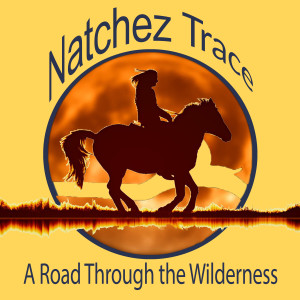

"A Ford, as you know, is not just a car, it's a place to wade across a stream. The significance of Grindstone Ford is that the water it crosses is Bayou Pierre. The Ford is about 45 miles up the Trace now from Natchez and in the early 1800s when boatmen traveled north out of Natchez to return home after floating their produce down the Ohio and Mississippi Rivers to sell it at Natchez or New Orleans, crossing Bayou Pierre marked their first actual steps into the wilderness. Up to this point, they'd been in the Old Natchez District, but after crossing the ford, travelers were setting foot into the lands of the Choctaw Indian Nation.
"In 1801 the United States signed treaties with the Choctaw Indians at Fort Adams, which is south of Natchez; and with the Chickasaw Indians at Chickasaw Bluffs, which is now Memphis, Tennessee. These treaties permitted the government to improve the road through the Indian lands.
"There's a trail at this stop that takes you over to the Old Trace and Grindstone Ford, which by the way was named for a water mill that was nearby.
"Join us next time when we'll look at the nearby Indian burial mound, Mangum Mound. For Natchez Trace: A Road Through the Wilderness, I'm Frank Thomas."
For more about Natchez Trace: A Road Through the Wilderness, visit eddieandfrank.com
More Episodes
All Episodes>>Creat Yourt Podcast In Minutes
- Full-featured podcast site
- Unlimited storage and bandwidth
- Comprehensive podcast stats
- Distribute to Apple Podcasts, Spotify, and more
- Make money with your podcast












